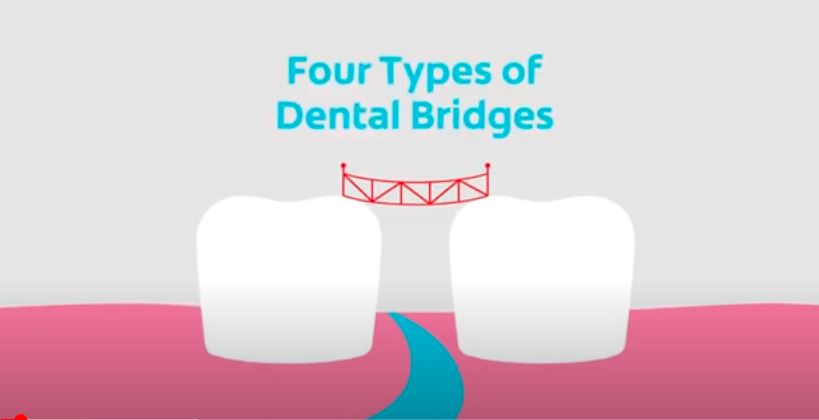Dental bridges are designed to restore function, confidence, and appearance, but an ill-fitting bridge can lead to severe discomfort and even long-term damage. Minor pain or discomfort from a dental bridge may seem manageable at first, but if it doesn’t fit properly, the issue can escalate quickly—much like a shoe that feels “almost right” when you first try it on but becomes increasingly painful after just a few hours.
An ill-fitting dental bridge can cause discomfort, alter speech patterns, and even contribute to chronic bad breath. Patients have compared this to “having gravel underfoot,” a striking metaphor that highlights how painful an improperly fitted bridge can become.
Symptoms of an Ill-Fitting Dental Bridge
How an Ill-Fitting Dental Bridge Feels and Why It’s Critical to Address
When you first get a new pair of shoes, they may feel fine—until you start walking in them. Over time, friction can lead to blisters and pain, making the shoes unbearable. This is precisely how a badly installed dental bridge can feel: initially comfortable, but eventually causing significant discomfort and instability.
Some patients even normalize their discomfort, assuming it’s just part of the transition process. They refrain from chewing on one side, experience slurred speech, or dismiss the persistent pain as “nothing.” However, these symptoms are warning signs that shouldn’t be ignored.
Symptoms of an Ill-Fitting Dental Bridge
Dr. Tanya Rodriguez, a prosthodontist based in San Francisco, explains, “Patients frequently normalize their symptoms, thinking it’s part of the healing process. However, discomfort that persists for more than a few weeks is likely a sign that something isn’t right.”
Here’s a quick-access guide to symptoms, potential causes, and remedies:
| Symptom | What You Feel | Likely Reason | Smarter Fix |
|---|---|---|---|
| Aching or Discomfort | Throbbing pain when chewing or at rest | Uneven pressure, bridge misfit | Get a full dental check-up |
| Temperature Sensitivity | Sharp pangs from hot tea or cold ice cream | Exposed tooth beneath bridge | Ask for a bridge reline or adjustment |
| Red/Swollen Gums | Persistent tenderness or occasional bleeding | Bacteria trapped under bridge | Deep cleaning plus fit reassessment |
| Wiggling Bridge | Bridge moves during speech or eating | Cement breaking down | Have it re-cemented or replaced |
| Bad Taste or Odor | Metallic tang or constant bad breath | Food particles lodging underneath | Clean beneath bridge and check seal |
| Speech Hiccups | Lisping or slurred words | Bulkiness or misalignment | Reshape bridge or speech-focused tweak |
| Misaligned Bite | Uneven contact when you bite | Occlusion set wrong | Bite balancing with structural adjustments |
| Visible Gaps | Noticeable space between bridge and gums | Gum recession or poor fit | Reline or remake bridge |
Why Bridges Shift Over Time – and Why It’s Okay
Even if your dental bridge fit perfectly when it was first placed, normal changes in the bone structure and gums can cause the area beneath it to shift over time. Additionally, cement used in the installation can deteriorate, especially if you missed a routine dental appointment due to pandemic-related delays. These shifts can occur gradually and without noticeable signs, which is why regular check-ups are essential to catch these issues early.

The Role of Digital Dentistry in Improving Fit
Thanks to advancements in digital dentistry, fixing a misaligned bridge has become more accurate and efficient. Intraoral scanners and AI-powered bite analysis collect thousands of data points to help create bridges that fit more precisely and comfortably. By using these advanced technologies, dentists can predict potential issues before they arise and make adjustments that ensure a better fit from the start.
What to Do if You Think Your Bridge Is Off
If you suspect your dental bridge isn’t fitting properly, don’t wait for the problem to worsen. Here’s a course of action to boost your smile and address discomfort:
- Make an Appointment: Schedule a thorough evaluation with your dentist to assess the fit of your bridge.
- Ask for X-rays or Digital Scans: These imaging techniques can reveal issues beneath the bridge.
- Consider Re-cementing or Adjustments: If necessary, ask your dentist about re-cementing or remaking the bridge for a better fit.
- Improve Your Home Routine: Use water flossers or floss threaders to clean beneath the bridge effectively.
- Stay On Top of Checkups: Schedule biannual checkups to prevent further complications.
Real Patient Story: When a Smile Strikes Back
Linda, a 47-year-old yoga instructor from Portland, recalls how she ignored the signs of discomfort in her dental bridge for months. “I thought the sore gums were just part of the healing process,” she says. “But eventually, I had to wince every time I chewed something crunchy.”
Her experience is not unique. Many patients dismiss early signs, such as mild discomfort or a metallic taste. However, as Linda’s case shows, these small misalignments can escalate into chronic issues if left untreated. After her dentist used 3D mapping to reline the bridge, she described the change as “night and day”. “Now, I forget it’s even there,” she said, smiling confidently again.
What Does a Bridge Adjustment Involve?
A poorly fitting bridge doesn’t always need to be replaced. Sometimes, a simple adjustment can make a huge difference. Using CAD/CAM technology, dentists can digitally remap the oral structure and identify pressure points or misalignments quickly. This approach is non-invasive and highly effective, addressing issues with minimal disruption.
- Re-cementing restores stability to loose bridges.
- Soft-tissue reline ensures a snug fit if gum recession has caused gaps.
- Occlusal adjustment reshapes the bridge to fix bite or speech issues.
The Psychological Effects of an Ill-Fitting Bridge
Dental discomfort can affect more than just your mouth—it can have a significant psychological impact. Research shows that individuals with poorly fitted prosthetics are more likely to experience anxiety, low self-esteem, and social avoidance. This is particularly true for people who need to speak in public or interact with others, like teachers or customer-facing workers.
A poorly fitting bridge can alter how you eat, speak, and even smile, which directly impacts your confidence. Fixing the issue is not just about improving your bite—it’s about regaining control over your social interactions and emotional well-being.
When to Replace the Bridge Instead of Fixing It
Not all dental bridges can be salvaged. If the underlying tooth structure has deteriorated or the material of the original bridge has worn down, your dentist may recommend a full replacement. Fortunately, with modern digital technology, replacing a bridge is quicker and less invasive than ever. Advanced materials, such as zirconia, are now used to create bridges that are both durable and visually pleasing.
Take Action Before the Problem Worsens
A poorly fitting dental bridge doesn’t yell for attention—it whispers at first. A slight click when chewing, a lisp when speaking, or occasional sensitivity to temperature changes can all signal a problem. Addressing these symptoms early will help avoid long-term discomfort and further complications.
For individuals managing busy lives, oral health may not always be the top priority, but paying attention to these early cues can significantly improve long-term outcomes. Proper care and timely adjustments can help ensure that your dental bridge continues to function comfortably and looks great for years to come.
Disclaimer: This article is for informational purposes only and should not be considered medical advice. Always consult with a qualified dentist or orthodontist for personalized recommendations regarding dental bridge fit, adjustments, and replacements.
